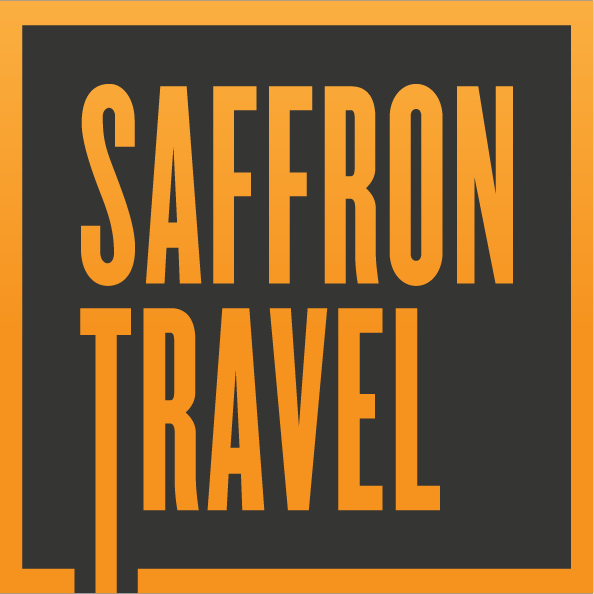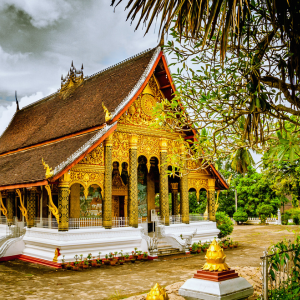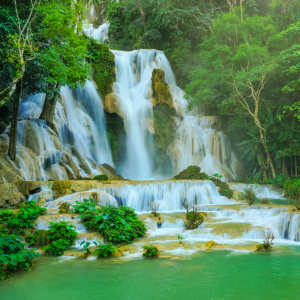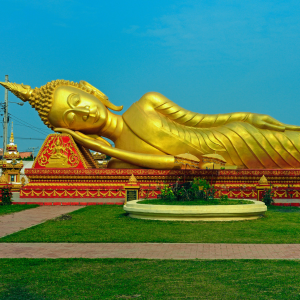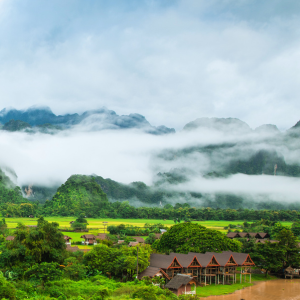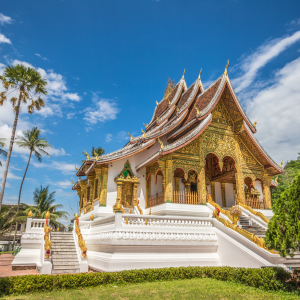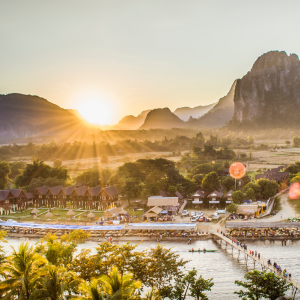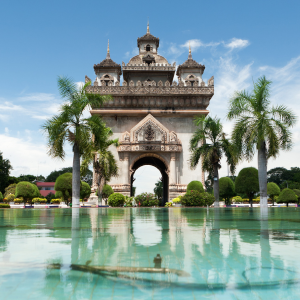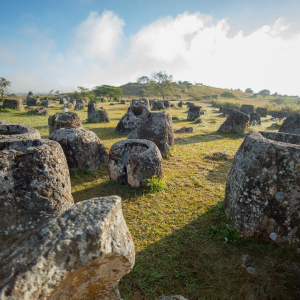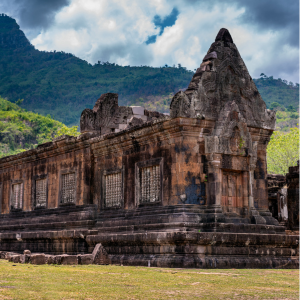LAOS TOURS

CAPITAL CITY
The capital city of the Lao People’s Democratic Republic (Lao PDR is the official name of Laos) is Vientiane.SIZE
Inland area: 236,800 Km2GEOGRAPHICAL SITUATION
Located towards the east of the peninsula of what was known as Indochina with no access to the sea, Laos shares its borders with China to the North, Myanmar to the North-West, Thailand to the West, Cambodia to the South and Vietnam to the East. An estimated 70% of the total area is dominated by rugged mountains, dense jungle and plateau. Peaks rise from 1500 to 2500 m, the highest one being the Phu Bia at 2820 m. The Mekong River, which still remains the main transportation link, extends 1800 km. Areas cultivated are located along the Mekong plain, where half of the population is concentrated.POPULATION
Laos has 7.5 million inhabitants with an average density of 27 inhabitants/km2. 48% of the population is Lao, 14% tribal Thai, 13% Sino Tibetan (including the Hmong and Yao ethnic minorities), 24% Mon-Khmer and 1% Vietnamese and Chinese. There are actually a lot of different ethnic minorities groups (69) in Laos but most of them belong to the three main categories: The Lao Loum, the Lao Theung and the Lao Sung. 85% of the population lives in the countryside. The dominant religion is Buddhism (65% of the population). There is a small community of Catholics while the rest of the population is animist.LANGUAGE
The official language is Lao. In addition to the dialects of Lao, numerous closely related languages (or dialects, depending on the classification) are spoken throughout the Lao-speaking realm in Laos and Thailand, such as the Nyaw, Phu Thai, Saek, Lao Wieng, Tai Dam, Tai Daeng.CURRENCY
The official currency is the Lao Kip (L-KIP). US dollars or Thai Baht are accepted in the main cities as are Euros in banks and for payment in some hotels and restaurants in major cities. The exchange rate is US$ 1 = 17,066 Laos KIP, and 1 Euro = 18,635 Laos KIP (Exchange rate update in 2023). Traveller’s cheques can be cashed only at major banks and usually incur a 2% to 5% transaction fee. Visa and Master cards are accepted now in most hotels in Vientiane and Luang Prabang, and in a few restaurants and shops in the main towns (Vientiane, Luang Prabang and Pakse), but can also be subject to 2% to 5% transaction fees. You can also get cash advances with your credit card either from ATMs or from foreign exchange offices (subject to 2% to 5% transaction fees). Depending on the country you are travelling from, the best advice is to bring either cash in USD or Euro. Note that exchange rates for small and big notes vary, so we would recommend you to bring some small notes in US dollars to cope with initial expenses on arrival then either 100 USD or 100 Euro bank notes. Be careful, banks and foreign exchange offices do not usually take old, scribbled or even stained bank notes. Please check opening hours, as some banks close at 4 pm.CLIMATE
Laos has a tropical monsoon climate with two seasons: dry from October to April and rainy from May to September. Temperatures vary according to altitude and can be very cold in mountainous areas from November to February.LOCAL TIME
Vietnam is 7 hours ahead of Greenwich Mean Time.ELECTRICITY
In Laos electric current is 220V, but sockets are not always standard. Adapters can be found in local markets. Note that one third of the country has not yet connected to electricity.WATER
It is advisable not to drink water from the tap unless it is boiled properly.TELECOMMUNICATIONS
For mobile phone users: only a few international operators have an agreement with Lao operators, but you will be able to buy phone cards on the spot. However, please keep in mind that the GSM cover does not yet reach the remotest provinces. Note also that there are a number of Internet shops in most of the big cities, although the Internet connection is often quite slow. Overseas calls can be made in most Internet Shops.HEALTH & MEDICAL FACILITIES
No vaccination is required, but visitors are advised to receive inoculations against hepatitis A and B, typhoid, rabies and tetanus, and to check in advance whether anti malaria treatment is necessary depending on the region they travel to. Inoculation for yellow fever is not necessary although doctors still usually recommend it. Vientiane has good hospitals staffed with foreign medical personnel, while in Luang Prabang and Pakse there are only local medical staff. For life threatening injuries it is advisable to be evacuated to Bangkok or Singapore and we strongly recommend that you arrange medical travel insurance.TRANSPORTATION
There are three international airports in Laos: Wattay in Vientiane located 15 minutes from the town centre, Luang Prabang in the North, 10 minutes from the heart of the historic quarter, and Pakse in the South located 10 minutes from the town centre. Road networks have improved but still need to be upgraded in some areas. By car or bus, it takes about 7-8 hours from Vientiane to reach Pakse and 8-9 hours from Vientiane to get to Luang Prabang.DRIVING
In Laos, vehicles drive on the right side of the road. Owners of an International Driving license are allowed to drive a car. Renting a motorbike is possible but, for security reason, can be temporarily forbidden in some areas by the local policeCOOKING
Traditional Laotian cuisine boasts over 350 specialities from different provinces. The most famous one is the Lap, a salad with thin slices of chicken, fish or pork. Meals are generally averagely spicy but make use of a wide array of interesting sauces. The main cities now offer an increasing selection of international restaurantsSHOPPING
Although Laos is still developing, you can find all kinds of products, including some imported from Thailand. There is however a strong tradition of cotton and silk weaving. Beautiful fabrics and manufactured products can be found. Prices displayed are usually fixed, but in other cases do not hesitate to bargainTIPPING
Tipping is not mandatory although it is appreciated. Note that prices in hotels and restaurants usually include 10% for VAT.ACCESS
Please find below a list of carriers offering services into Laos: – Bangkok Airways – China Eastern Airlines – Lao Airlines – Thai Airways – Vietnam Airlines Note that the main hub for connecting flights is BangkokVISA AND PASSPORT
A visa is compulsory to enter Laos. To obtain a visa you must first ensure your passport will be valid for at least 6 months after your return date. Citizens of Luxembourg and Switzerland do not need a visa if the length of their stay does not exceed 14 days. There are 2 options at the moment to obtain a visa for Laos: – For USA, Canada, Australia, New Zealand, E.U and Swiss citizens visas can be acquired either directly or through your travel agency at Laotian Embassies and Consulates. – You can obtain your visa on arrival at the international checkpoints of Wattay International Airport in Vientiane, Luang Prabang or Pakse International Airports, at the Vietnam-Laos border checkpoint on national road 8 (Namphao) near Vinh (Vietnam) and on national road 9 (Densavanh) in front of Lao Bao (Vietnam), as well as the Thai-Laos border checkpoints at the Friendship Bridge in Vientiane (in front of Nongkhai), Vangtau close to Pakse (in front of Chongmek) and Houeixay (in front of Chiangkhong). At the China-Laos border you can obtain your visa at the checkpoint of Boten, in front of Mengla (Yunnan province). Be careful, the checkpoint of Veunkham between Laos and Cambodia cannot deliver visas on arrival yet. Both a Cambodian and a Lao valid visa should therefore be in your possession before departure.BEFORE GOING
If you are travelling in the north or the centre from November to February warm clothes are recommended. Likewise warm clothes are necessary all year long in the northern provinces (Samnua, Phongsaly, Luang Nam Tha, Oudomxay, Luang Prabang and Xieng Khouang). In the south, light clothing is a must all year long except in Paksong (Salavan Province). We also recommend you bring along mosquito repellent and high factor sun block, a cap or a hat, sunglasses, a raincoat and a small bag to carry a few things in case you have to leave your big suitcases at the hotel for a few days. A torch may be useful depending on your itinerary. Laos is a predominantly Buddhist country. So you should pay attention to what you are wearing: avoid short and bare shoulder cloths when you visit temples or pagodas and for footwear slip-on shoes or sandals are the most common and conveninent.OTHER DESTINATIONS

VIETNAM
From the latticed mountains in the North, through the dramatic rivers and caves of central Vietnam, down to the pristine beaches and tropical islands in the South, Vietnam’s natural landscape has something for anyone seeking a revitalizing escape. In the ancient streets of Hanoi and the bustling alleyways of Ho Chi Minh City – or Saigon as it used to be called – restaurants, art galleries, museums, and elegant boutiques sit alongside stylish street-side cafes and contemporary bars. Vietnam’s heritage and vibrant culture are finding new life as the country once again enjoys peace and emerging prosperity.
Read more
CAMBODIA
The magnificent Angkor Wat temple complex never disappoints. The ancient architecture, adorned with remarkable statues and depictions on temple friezes of life during the Khmer Empire, is truly one of the highlights of any trip to Indochina. Cambodia is also home to the largest lake in all of Southeast Asia – Tonle Sap – dotted with little villages on stilts and beautiful mangrove forests. At Kratie on the banks of the Mekong River, with a bit of luck, you can spot the rare Mekong River Dolphins. Phnom Penh is known for its many museums testifying to the horrors of the Khmer Rouge but is also rapidly transforming into a fashionable modern metropolis. Along the south coast, the quiet beach towns of Kep and Kampot contrast with the larger city-by-the-beach buzz of Sihanoukville. Near the Cardamom Mountains to the west lies Koh Kong, boasting luxurious floating eco-resorts, small uninhabited islands, and some of the best beaches in the region.
Read more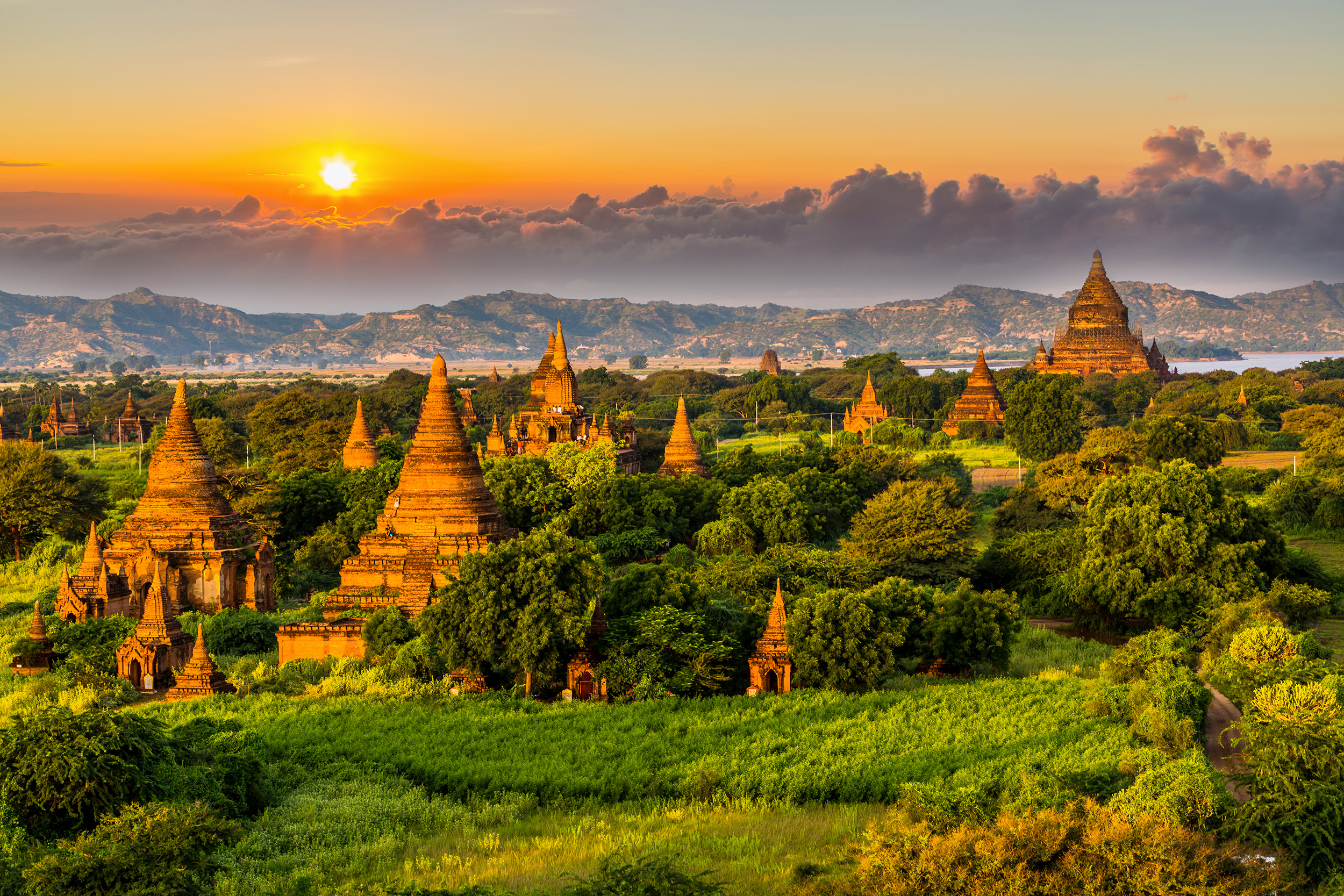
MYANMAR
It was only relatively recently that Myanmar emerged as one of Southeast Asia’s most enticing destinations to visit. From the islands of the Andaman Sea in the south, right up into the Eastern Himalayan mountain range, Myanmar covers a mesmerizing spectrum of geographic and cultural settings. No wonder Rudyard Kipling once described it as 'quite unlike any land you will ever know.' Rich in archaeological sites, glittering pagodas, colorful festivals, and breathtaking artwork, Myanmar is also blessed with an awe-inspiring range of lush fertile plains, vast virgin jungles, snow-capped mountains, and pristine beaches.
Read more